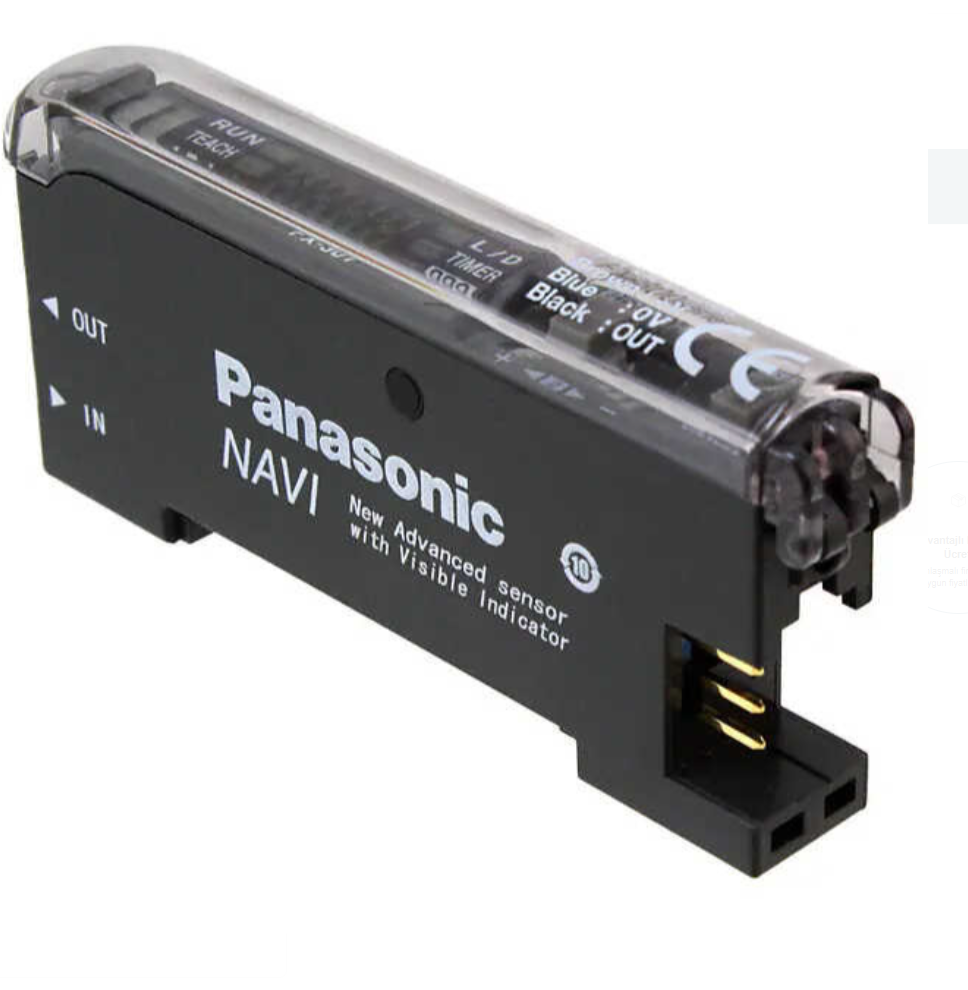Panasonic FX-411-C2 Digital Fiber Sensor: Superior Industrial Automation
The Panasonic FX-411-C2 digital fiber sensor is a top-tier solution for industrial automation sensor applications, featuring a red LED fiber sensor for high-precision fiber optic detection. With an NPN output sensor and quick-connect fiber sensor design, this compact fiber amplifier is perfect for FX-411-C2 conveyor systems and packaging automation sensor tasks. As a RoHS-compliant sensor with a dual digital display, it ensures reliable results in demanding environments. The four-level light emission and peak hold function enhance FX-411-C2 quality control, making it an excellent choice for indoor fiber optic sensor setups powered by a 12-24 VDC sensor.
Technical Specifications of Panasonic FX-411-C2 Digital Fiber Sensor
Engineered for advanced automation, the FX-411-C2 offers robust specifications. The table below outlines its key features:
| Parameter | Specification |
|---|---|
| Sensor Type | Digital fiber optic, red LED |
| Output | NPN open-collector transistor |
| Connection | Quick-connect cable |
| Display | Dual 4-digit red/green LED |
| Light Emission | Four levels (light saturation prevention) |
| Power Supply | 12–24 VDC |
| Compliance Standards | RoHS (2011/65/EU, 2015/863/EU) |
Key Features and Industrial Applications
High-Precision Detection for Conveyor Systems
The Panasonic FX-411-C2 digital fiber sensor delivers high-precision fiber optic detection, ideal for FX-411-C2 conveyor systems tasks such as product alignment or material handling. Its peak hold function ensures accurate FX-411-C2 quality control in packaging automation sensor applications, providing consistent performance in high-speed production environments.
Quick-Connect Design and Clear Monitoring
The quick-connect fiber sensor feature simplifies installation, reducing setup time in industrial automation sensor systems. The dual digital display with 4-digit red/green LEDs offers clear, real-time feedback for efficient monitoring. The four-level light emission, designed with light saturation prevention, ensures reliable detection in indoor fiber optic sensor setups, enhancing usability in compact fiber amplifier installations.
Versatile Design for Automation
The FX-411-C2’s NPN output sensor and 12-24 VDC sensor power supply ensure compatibility with standard automation systems. As a RoHS-compliant sensor, it meets environmental standards. The FX-411-C2 datasheet and FX-411-C2 setup guide, provided by Panasonic, offer detailed instructions for optimizing performance in packaging automation sensor and conveyor system applications.
Installation and Maintenance
The compact fiber amplifier design and quick-connect fiber sensor simplify the FX-411-C2’s installation, enabling fast deployment in industrial automation sensor setups. The quick-connect cable ensures secure connections, while routine cleaning of the fiber head maintains high-precision fiber optic performance. The robust construction minimizes maintenance needs, ensuring long-term reliability in FX-411-C2 quality control tasks.
Safety and Compliance
As a RoHS-compliant sensor, the FX-411-C2 adheres to environmental standards (2011/65/EU, 2015/863/EU), reflecting Panasonic’s commitment to sustainability. Its light saturation prevention feature ensures safe and accurate detection in indoor fiber optic sensor applications. The dual digital display enhances operational efficiency in multi-sensor configurations.
Why Choose the Panasonic FX-411-C2 Digital Fiber Sensor?
The Panasonic FX-411-C2 digital fiber sensor is a premier digital fiber sensor for industrial automation. Its red LED fiber sensor, NPN output sensor, and quick-connect fiber sensor design make it ideal for FX-411-C2 conveyor systems and packaging automation tasks. The compact fiber amplifier, high-precision fiber optic capabilities, and dual digital display deliver exceptional performance in FX-411-C2 quality control. Consult the FX-411-C2 datasheet for detailed specifications and elevate your automation processes with this reliable, high-performance sensor.
Visit our blog about The Importance of Sensors in Industry 4.0.
Enhanced Connectivity and System Integration
The Panasonic FX-411-C2 digital fiber sensor stands out for its ability to integrate seamlessly into complex industrial automation systems. With its quick-connect design and NPN output configuration, the FX-411-C2 allows engineers to connect multiple sensors quickly and securely, minimizing downtime during setup or maintenance. This feature is particularly beneficial for assembly lines, packaging stations, and conveyor-based systems that demand continuous operation and high throughput.
The compact fiber amplifier ensures that the sensor can be installed even in space-constrained environments, while maintaining full functionality. This adaptability makes the FX-411-C2 automation sensor an ideal choice for industries that prioritize efficiency, flexibility, and precision in production control processes.
Smart Performance for Modern Manufacturing
Equipped with a four-level adjustable light emission system, the FX-411-C2 maintains accurate detection under changing lighting conditions. This capability enhances measurement consistency and reduces false signals in high-speed production environments. The combination of robust construction and advanced optical performance ensures long-term reliability, even under intensive use.
By uniting intelligent design with energy-efficient operation, the Panasonic FX-411-C2 digital fiber sensor embodies the future of industrial automation. Whether used in quality control, packaging automation, or precision positioning systems, it provides exceptional detection accuracy, helping manufacturers achieve higher productivity and superior process stability.

